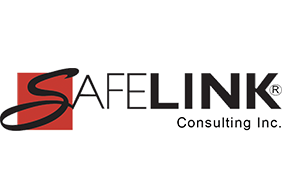Here's the latest list of Fiscal Year 2022 most cited OSHA Standards in Dentistry along with tips to help you in your dental practice or laboratory.
Each year OSHA publishes the top 10 most frequently cited standards for the prior fiscal year. The latest list is for the Fiscal Year 2022 which is from October 1, 2021 to September 30, 2022.
SafeLink Consulting has compiled a list of the top standards cited by OSHA.
Most Cited OSHA Standards in Dentistry Including State OSHA Agencies for FY 2022:
1) Bloodborne Pathogen Standard [1910.1030]: 96 Violations
In dentistry, the Bloodborne Pathogen Standard continues as the number one violation. If your workers are exposed to potentially infectious items you must have a written Exposure Control Plan and review that Plan annually. Tip: Always document your Exposure Control Plan review with employees so you have something in writing to show OSHA should you be inspected.
Failing to offer or document the refusal of the hepatitis B vaccine falls under the Bloodborne Pathogen Standard. The offer of the hepatitis B vaccine was cited in several cases last year so it is critical that you document the offer to anyone who handles potentially infectious items. The vaccine must be offered at no cost to the worker and at a reasonable time and place. If an employee declines the vaccine, they must sign a declination form. The refusal form states that if a worker initially declines to receive the vaccine, but at a later date decides to accept it, the employer is required to make it available, at no cost, provided the worker is still occupationally exposed. Refusal most likely is because the worker has already had the vaccine prior to employment with you. In this case, they still need to sign your refusal. Tip: Remember to document the refusal of your offer, despite the reason.
Proper Removal of PPE for Infection Control
2) Hazard Communication [1910.1200]: 36 Violations
In regard to Hazard Communication, this is about chemical hygiene. This is the standard that requires employers to give employees access to Safety Data Sheets, train workers on the hazards of chemicals, implement controls to protect workers, and label products with hazard warnings. As in other industries, this standard continues to be difficult for employers to comply with. Tip: An easy solution for Safety Data Sheets is to subscribe to SafeLink’s SDS Online Access service.
3) Respiratory Protection [1910.134]: 28 Violations
Compliance with the Respiratory Protection Standard was more familiar to dental laboratory owners prior to the pandemic than it was to dental practices. Now this standard is well-known with the use of respirators such as the N95 for protection during aerosol-generating procedures. The confusion among employers seems to come from determining if the use of respirators is voluntary or mandatory. Tip: Mandatory means that the employer has directed workers to wear them during specific tasks. When the use of them is voluntary, the employer must provide a respirator if requested by an employee.
Airborne hazards are everywhere.
From an airborne hazard standpoint, there’s plenty of risk to go around. And, if your team doesn’t feel safe within that environment, or they’re not trained to understand the toxins, it could cause lifelong lung issues. The question then becomes: Is that risk worth it?
From your perspective as an employer, you’ll also have to answer a question: Is it worth cutting corners on respiratory protection to save a few bucks now, even with the risk of OSHA fines and possible lawsuits?
In order to maintain a safe workplace, and comply with OSHA's Respiratory Protection Standard you’ll need to develop, maintain, and implement a respiratory protection program for your employees. Including this topic in your safety program is very important if there is a respiratory risk on any level.
Get a customized Health & Safety Manual for your business.
Additionally, respirators give employees the confidence they need to stay protected and safe from dangerous vapors, dust, smoke, mists, fogs, gasses, fumes, sprays, and other airborne hazards. Employers must complete medical evaluations and perform fit testing for employees required to wear respirators. These steps ensure that the employee can safely wear the respirator while working and that the respirator will function properly. Training on proper respirator use and maintenance is also required.
Like many of the other standards on this list, adequate employee training is a common reason that OSHA cites employers for noncompliance. This step is only necessary one time unless the brand or type of respirator is changed. OSHA is strict on compliance with this Standard when respirators are required.
OSHA requires the Appendix D document to be provided to workers. Appendix D states that the employer will provide the respirator but the worker agrees to wear it, store it, and dispose of it correctly. SafeLink Consulting not only recommends that you provide a copy to the workers, but also have them acknowledge receipt of the document. Learn more about respiratory protection.
How to Achieve OSHA Compliance for Dentistry
How to Achieve Dental Lab OSHA Compliance
Other Cited Standards in Dentistry Include:
4) Training – 8 violations
Learn more about why safety training is important for your business.
5) First Aid, exits, fire extinguishers and other emergency violations: 7 violations
6) Personal Protective Equipment [1910.132]: 5 violations
We’re seeing frequent follow-ups to employers’ responses asking for even more information including documentation of written safety policies and policies for enforcement of the policies. Contact SafeLink Consulting for assistance with meeting OSHA Compliance.
Other Most Frequently Cited OSHA Standards FY 2022
Despite being down 35 violations from last year, fall protection remains at the top of the OSHA Most Cited Violations list. In fact, this marks the 12th year for fall protection to lead the list.
Hazard Communication jumps up to the number 2 spot. The majority of these violations happen because of the complexity involved in compliance. Failing to label chemical containers, neglecting to obtain Safety Data Sheets (SDS) from manufacturers, and leaving chemicals off chemical inventory lists are a few examples of Haz Com citations.
The most frequently cited standards are evenly divided between construction and general industry standards. Dentistry falls within the general industry standards.
In FY 2022, the most frequently cited OSHA standards in general industry were:
- Fall Protection—General Requirements (§1926.501): 5,260 violations;
- Hazard Communication (§1910.1200): 2,424 violations;
- Respiratory Protection (§1910.134): 2,185 violations;
- Ladders (§1926.1053): 2,143 violations;
- Scaffolding (§1926.451): 2,058 violations;
- Lockout/Tagout (§1910.147): 1,977 violations;
- Powered Industrial Trucks (§1910.178): 1,749 violations;
- Fall Protection—Training Requirements (§1926.503): 1,556 violations;
- Personal Protective and Life Saving Equipment—Eye and Face Protection (§1926.102): 1,401 violations; and
- Machine Guarding (§1910.212): 1,370 violations.
Raising awareness on common workplace violations can help workers identify hazards within their own workplaces and may provide them the information necessary to report these hazards. In addition, employers should use this list to evaluate their own workplace.

Contact SafeLink Consulting for assistance or visit our website to learn more about how we can help your business.
Learn more about what SafeLink Consulting can do to help your business with compliance services, including safety compliance, to meet OSHA training requirements and quality system consulting to meet FDA compliance. SafeLink Consulting assists businesses with workplace safety training, infection control training, HIPAA training online, quality systems, assessments, audits, due diligence, and more.
Industries include:
Dentistry compliance - assisting the dental practice with meeting requirements for OSHA, HIPAA, EPA, and CDC guidelines, patient safety and employee health & safety
Dental Laboratory compliance - assisting the dental lab with meeting requirements for OSHA, FDA, and CDC guidelines, employee health & safety, plus FDA requirements for lab manufacturing custom implant abutment /gmp for medical device manufacturers
Medical Device Manufacturers compliance - assisting with meeting OSHA compliance & FDA requirements, GMP - good manufacturing practices
General Industry compliance - assisting with OSHA compliance and FDA compliance as it pertains to the specific business
Beverage Industry compliance - assisting beverage businesses such as the craft brewery, winery, cidery, distillery, vintner with meeting OSHA compliance, health & safety, FDA requirements / GMP - Good Manufacturing Practices.
Get notification when new regulatory compliance training courses are added plus upcoming events by subscribing to our email news.







Leave Comment